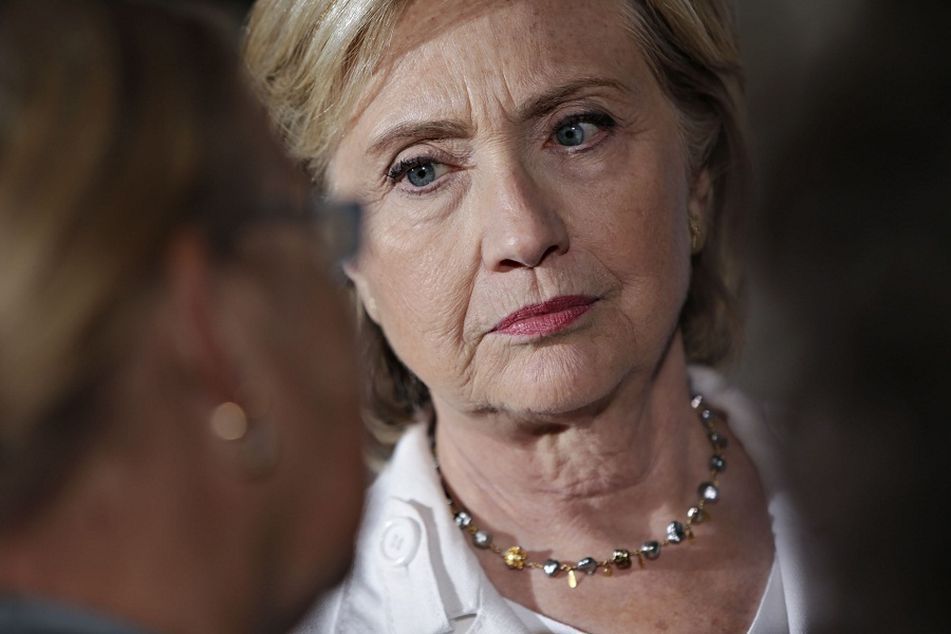Hillary Clinton’s Tweet-induced biotech sell off has created buying opportunity

Sector already feeling wrath of nervous investors, gets second look after presidential contender's comments spark big drop.
Hillary Clinton drew the attention of biotech investors recently when she tweeted out her angst over prescription drug prices, but, really, the Democratic presidential frontrunner was just adding water to a boat that’s sprung a leak.
At this point, market analysts are starting to see a fresh buying opportunity, thanks largely to the politicized pilling on.
The iShares Nasdaq Biotechnology ETF (IBB) presents a perfect example of how the industry’s rally has been stalled.
The ETF is flat from the start of the year, through Wednesday, but is up 10.87% over the trailing 12 months. Over the past three months, the fund is down 17.79%, including an 11.3% drop over the past 30 days. The broader Health Care Sector SPDR ETF (XLV) is down 2.18% from the start of the year, and is up 5.05% over the past 12 months. But over the past three months, it’s off 10.64%, including a 5.7% drop over the past 30 days.
The overall equity market, measured by the S&P 500 Index, has fallen 5.29% since the start of the year, and is down 61 basis points over the trailing 12 months. Over the past three months the index has declined 6.44%, including a 2.47% drop over the past 30 days.
Price gouging like this in the specialty drug market is outrageous. Tomorrow I’ll lay out a plan to take it on. -H https://t.co/9Z0Aw7aI6h
— Hillary Clinton (@HillaryClinton) September 21, 2015
The biotechnology industry had already been suffering the wrath of nervous health-care sector investors, who used Ms. Clinton’s comments, which included a hasty proposal to better regulate drug pricing, as a reason to take some profits and take a fresh look at the category.
HEADLINE RISK
“Right now, it’s more of a headline risk than anything else,” said Jeff Loo, health care sector analyst at S&P Capital IQ.
“Investors are concerned that if Clinton is elected she may put forth some proposals that will impact the drug sector, but if you look at her proposals, nothing she introduced is new,” he added. “And she’s not the only one to bring up that issue recently.”
Ms. Clinton’s injection into the drug-pricing debate began in earnest on Sept. 21 after it was reported that Turing Pharmaceuticals was raising the price of a popular infectious disease drug by about 5,000%.
But the drug-price debate is an older story, according to Mr. Loo.
More than a year ago, the head of pharmaceutical giant Gilead Sciences (GILD) was called before Congress to justify its drug-pricing policies. Valeant Pharmaceuticals International (VDX) is another example of a drug-maker that has been called before Congress to testify.
“There are a series of issues that caused this recent downturn for biotech, because it has been contentious for a long time,” Mr. Loo said. “But biotech has taken these kinds of hits in the past and it has rebounded.”
That’s where Mr. Loo another other analysts see an opportunity in the recent pullback.
One of the most obvious signs of support for a biotech rebound is the general earnings outlook, which included projected earnings-per-share growth of 22% for 2015 and projected sales growth of 18%.
That compares to estimates that are essentially flat for the broader market of stocks.
“All the rhetoric hasn’t helped investor sentiment for biotech stocks, and that might be presenting some opportunities,” said Dave Mazza, head of ETF research at State Street Global Advisors. “After the dust settles investors might start looking to areas where they can find some value.”
Mr. Mazza recognizes the impact of an edgy comment from a politician, but he believes the biotech pullback was fully in the works prior to Ms. Clinton’s tweet.
“What we’ve seen, even before the tweet-induced activity, was that investors have been selling growth names and trickling into areas that are more value oriented,” he said. “As a result, it’s been a pairs-trade with those stocks most consistent with growth and those most associated with value, because it looks like some of the volatility has been the result of a need to unwind some of those growth positions.”
RETAIL INVESTORS MOVING IN
As an investment strategy, the biotech space has historically been more popular with traders than with retail-class long-only investors, Mr. Mazza said. But he has seen a larger migration of retail-class investors into the space in sync with increased merger-and-acquisition activity, which is another catalysts for stocks.
Assuming that is the case, there is a safer way to invest in biotech than to just chase the largest names or load up on a biotech ETF.
Todd Rosenbluth, director of mutual fund and ETF research at S&P Capital IQ, recommends a broadly diversified portfolio of health care sector stocks that should include plenty of biotech and pharmaceutical exposure.
One fund he cited is Fidelity Select Biotechnology Portfolio (FBIOX), an actively-managed mutual fund that focuses on larger health care and biotech companies.
“If you own a health care fund you probably already have exposure to biotech because most health care funds, active or otherwise, have sizeable exposure to biotech stocks,” Mr. Rosenbluth said. “But if you’re worried about the risks related to more congressional oversight, the larger companies will be better positioned to manage those higher costs than smaller companies that might have all their revenue tied to a single drug.”
Learn more about reprints and licensing for this article.








